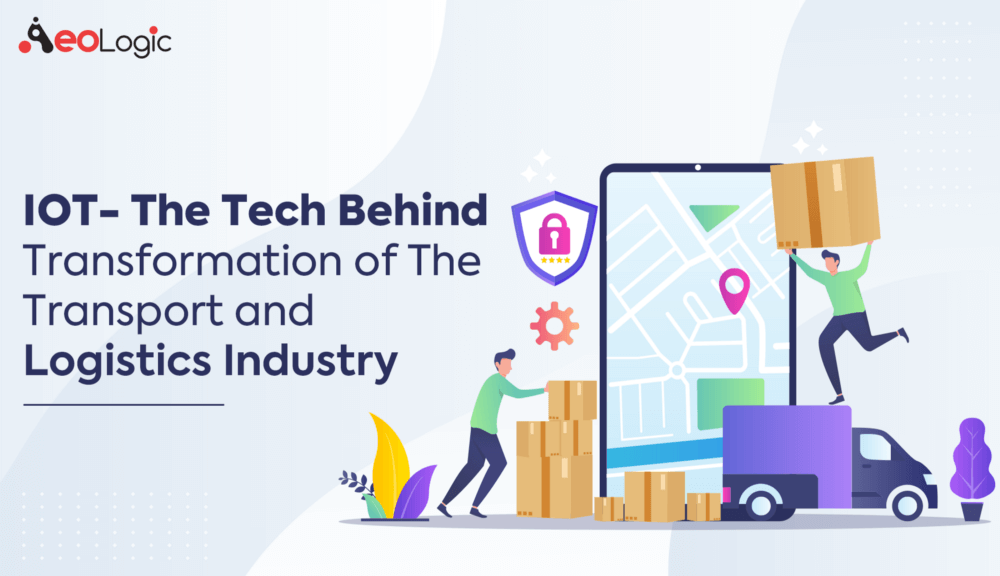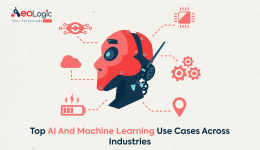In the 2010s, the Internet has made a qualitative leap forward, and the end of the decade now offers revolutionary digital solutions that may become indispensable for every business in the future. One of these new developments in the Internet of things (IoT), without which it will be impossible to imagine some areas in the next five to ten years — logistics especially and transport especially.
In logistics and transportation, the Internet of Things can create a machine to machine connections that enable vehicles, packages, containers, loading equipment, and other devices and assets to communicate with one another throughout the supply chain. Human beings don’t have to manually log information when smart devices can trap that data automatically. So how will tomorrow’s thought leaders revolutionize logistics and transportation with IoT?

But What Benefits does IoT Serve?
If you have ever traveled in a means of public transport, you know how painful it can be. Waiting for the bus to arrive, jumping on a bus which is already loaded with passengers, traffic jams, insane ticketing systems are only some of the ordeals we face regularly. With IoT implementation, all this is about to change for the better.
Just like transportation, logistics companies are adopting this highly advanced technology and moving away from a traditional approach of managing orders.
Let’s quickly take a look at some of the biggest advantages of implementing IoT in our Logistics and Transport industries.
How is IoT Transforming Transportation?
One of the biggest plus points and an added advantage with IoT devices is that these devices are fairly very small which means these devices can not only be installed on buses and trains but can also be integrated into street lights, bus stops, train platforms, railway tracks, etc. This enables continuous visibility and minimizes the risk of accidents. Moreover, transportation authorities can harness the power of data coming through these IoT devices and deliver enhanced services to commuters while increasing operational efficiency.
Vehicle Maintenance
One of the main reasons behind the dissatisfaction with commuters is the poor state of public transport. From vehicle breakdown to infrastructure faults, there are many issues that can cause delays and stoppages and leave passengers stranded. As a result, they end up reaching their destination late, which increases their anger and frustration.
By integrating IoT devices in vehicles and infrastructure, you can check the health and condition of vehicles and infrastructure and conduct predictive and proactive maintenance. These sensors can notify you when there is something wrong with the vehicle so you can easily correct it. This will save passengers from delays during commutes and improve customer satisfaction.
Efficient Travel
Travelers are accustomed to delays which is why they are planning their journeys with delays in mind. Due to this, they have to leave their home or workplace earlier so they can reach the desired destination on time. This makes travel more inconvenient and wastes a lot of their time.
This can easily be fixed by providing real-time information to commuters regarding bus and train delays. IoT tracking systems can not only provide that real-time information but can also send it directly to special apps installed on traveler smartphone. This way, travelers know the estimated time a bus or train will take to arrive and leave so they can catch the bus or train on time.
Reduced Traffic and Pollution
When a public transportation system offers an efficient traveling facility to its users, it will also persuade other travelers who use private transport to try public transport. When people start using public transport and ditch their private cars, it will have two positive impacts. One, there would be fewer cars on the road, which means that there would be fewer traffic jams. Second, it will reduce pollution by cutting down the carbon footprint, which is a plus for the environment.
Transformation of Logistics with IoT
We are at the dawn of the Internet of Things revolution. The industry has huge potential, from all the objects that had the ability to be connected to the Internet to obtain useful data; in fact, only one percent was connected in 2015, according to DHL and Cisco report. But even this one percent has strongly changed the industry, and in particular, the sphere of logistics. There are hundreds of projects, applications, and technologies that significantly influence these businesses.
Inventory and Warehouse Management
It’s extremely important to manage the warehouse space efficiently in order to make the delivery of goods fast and easy. Moreover, using smart systems built with IoT can also help you optimize your space and locate packages in the most optimal place.
Installing smart sensors in the warehouse can be a great way to automatically create orders when there’s little supply left. This can be a good way to manage limited space in the warehouse.
RFID tags are often used by companies to manage their products and warehouses. They automatically send information to the database when the product has left the warehouse.

Fleet management
One of the biggest advantages that IoT serves in logistics is the Smart Fleet Management. Thanks to sensors and devices embedded in the vehicles we can gather information about the condition of the vehicle, the amount of fuel, or driver behavior.
Monitoring the condition of important parts of vehicles like tire pressure, coolant level, and so on can minimize the number of unexpected failures. Having real-time access to these data makes maintenance a lot easier and more effective.
Another way to use IoT in logistics is by installing sensors and devices responsible for maintaining the right temperature and humidity conditions within the truck. It’s extremely important when transporting foods and medicines. Internet of Things gives us the advantage not only based on the real-time knowledge on the situation. Many devices control and correct the situation when it’s not meeting the standards.

Supply Chain Management
Before the product gets to its final destination, it goes through a whole process of shipment. When millions of different goods are changing their locations at the same time, it’s difficult to manage them efficiently. Thanks to IoT sensors the whole process can be much more effective and error resistant.
IoT solutions in logistics can give real-time data on the location of goods, identify whether there was a theft or the shipment has been delayed.

Track and Trace
Making sure the goods are in the right trucks, on the way to the right warehouses, etc. is crucial in transportation and logistics. It also takes a lot of time and resources and is very error-prone.
IoT sensors like RFID (radio-frequency identification) or AIDC (automatic identification and data capture) are great methods to track your goods and manage them properly. RFID uses radio waves to determine the position of goods based on implemented microchips. These tags can transport information not only about what the product is and where it is but also where it’s supposed to be shipped etc.
The Future of IoT
Transport, Logistics, and Fleet management companies use IoT technology not only to increase efficiency and productivity of operations but also to enhance the way operations take place. The Internet of Things will fundamentally transform the way cargo and merchandise are tracked while removing solution cost and reducing solution cost. The extensive use of robotics in large warehouses, and to handle hazardous goods is already widespread, as is the driverless, remote-controlled vehicles.
The Internet of Things doesn’t just inform a single use case or initiative. It impacts every aspect of transportation and logistics and can revolutionize the ways in which companies move cargo from one place to another. Although thought leaders don’t know how the IoT will look in 50 years, current analysis suggests that tomorrow’s shipping and receiving processes will operate far more efficiently than they do today.
We, At AeoLogic Technologies, combine our market research expertise across an array of technologies that help in building a better future. We’ve been carrying out qualitative and quantitative research projects for our clients for several years, establishing ourselves as the gold standard in reliable technical research.
For the last 8+ years, we have an unbeatable experience when it comes to implementing IoT in Transportation and Logistics. Developing solutions like traffic management and parking management for the transportation sector and Drone Based deliveries for aviation giants like SpiceJet in their Logistic Arm.
We thrive on making our expertise in business research and solution implementation, the driving force behind the success of a world-changing tech revolution.
Do you also have an amazing idea that can change the world? we’d love to hear it.





